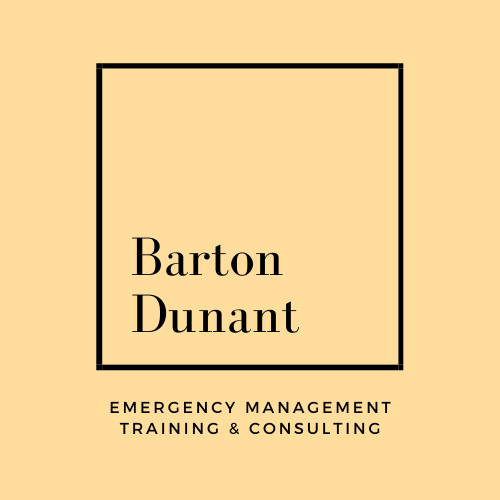Secure and Hold (i.e., Lock out)
In September of 2024, Barton Dunant revised its suggested wording, to change ‘Lockout’ to ‘Secure and Hold’, to align to the I Love U Guys foundation’s Standard Response Protocol.
We believe there is a point in the response to an active assailant, when it might require securing everyone inside and holding them until the threat has ceased. We used to call this a Lockout and now will use the term “Secure and Hold”. Both are very differently from a Lockdown. While This can be a bit confusing at first, it is critical to do the right actions based on different scenarios – even for the same incident. No-notice (or little notice) incidents, including active assailant attacks require everyone to know in advance what to do – and more importantly what to do to stay/become safer where they are in relation to the threat.
Secure and Hold means no one comes in a building and no one goes out, once the alert is issued. If a campus of multiple buildings is on Secure and Hold, it means every building is locked out – and if you are inside the campus you should stay in the building you are in; and if you are outside of the campus you will not be able to (nor should you try) to get inside the campus. A Secure and Hold is a stricker set of rules and protocols than a shelter-in-place order, but it is a form of sheltering-in-place, as compared to evacuating.
Secure and Hold should be different from a Lockdown. A Secure and Hold is ordered when the threat (such as an Active Assailant) is near your location, but not (yet!) a direct threat to you or others in your building or on your campus. When a building or a school goes on Secure and Hold, it should mean that the threat is not on campus and no one goes in and no one comes out (except emergency services). Secure and Hold orders can become Lockdowns, when the threat does move to your building.
Barton Dunant
Secure and Hold should also mean that the ‘business as usual within a building should change. People need to be informed that the building is in a Secure and Hold order, and why. If there is any timeframe for the Secure and Hold, let them know that as well, too. People must be informed when the Secure and Hold is ‘over’ and normal operations have resumed. This is true for all the people in the building and your staff who may be away from the building. Here’s one difference between a shelter-in-place order and secure and hold: if you are outside of a building after it goes into secure and hold; they should not let you in. If the people in a building are just sheltering-in-place – for severe weather warnings, for example – they should let you in the building, since it is safer for you to be inside than outside. In a secure and hold, the people inside of the building do not know if or who the threat is, coming to them. They need to become aware of and prepared if things get worse. Obviously, students would be pulled in from the playground outside before the ‘Secure’ part is fully invoked, but parents who come to pick up their kids (even if scheduled), would not be allowed in the school building, once the Secure order is in place.
Secure and Hold should be ordered differently than Lockdowns. A Secure and Hold is ordered when the Active Assailant is near your location, but not (yet!) a direct threat to you. When a building or a school goes on Secure and Hold, it should mean that the threat is not on their campus and no one goes in and no one comes out (except emergency services). Secure and Hold orders can become Lockdowns, when the threat does move to your building (or your building is attacked).
Here’s a real life example of how this can play out:
Secure and Hold (i.e., Lock out) Read More »

